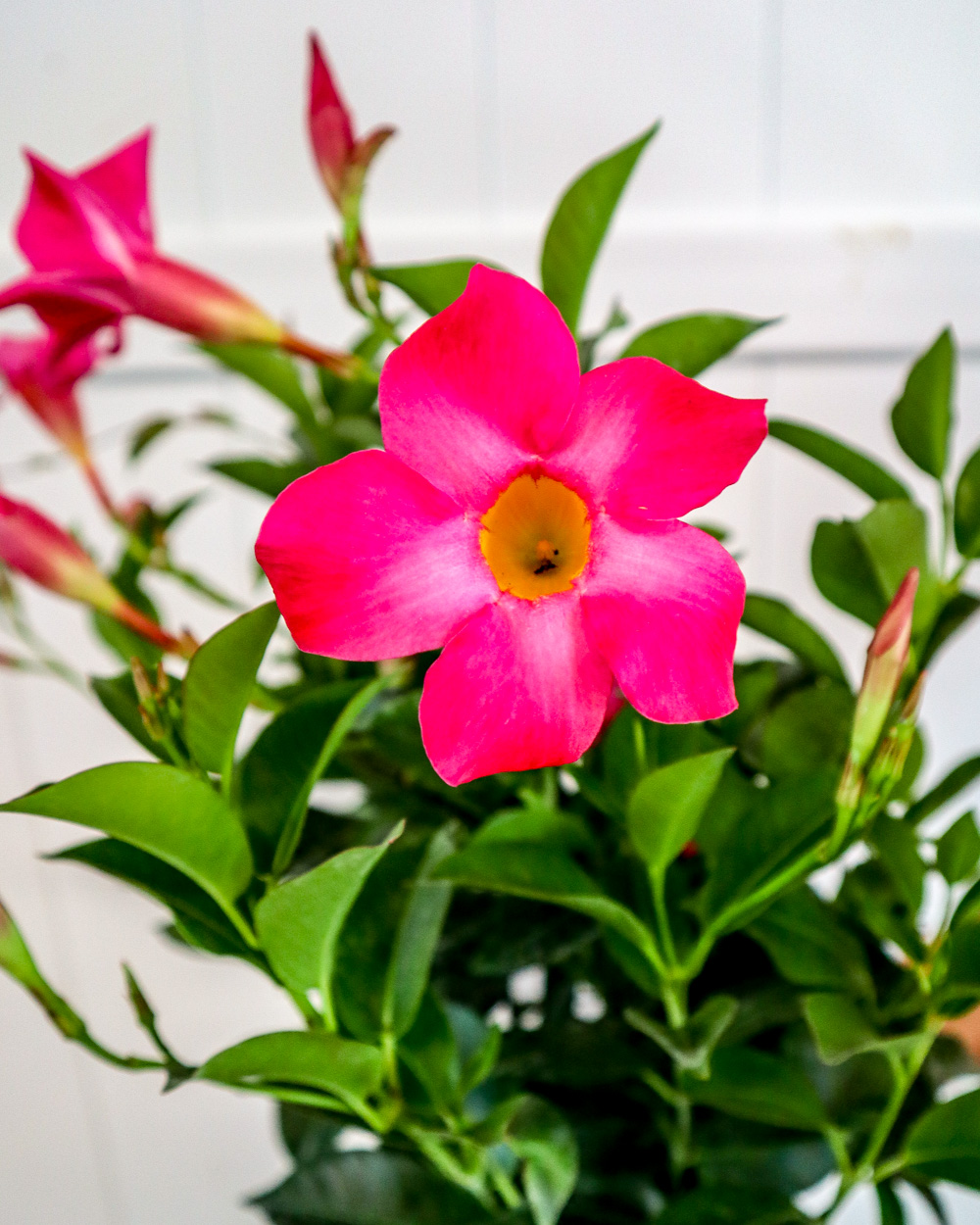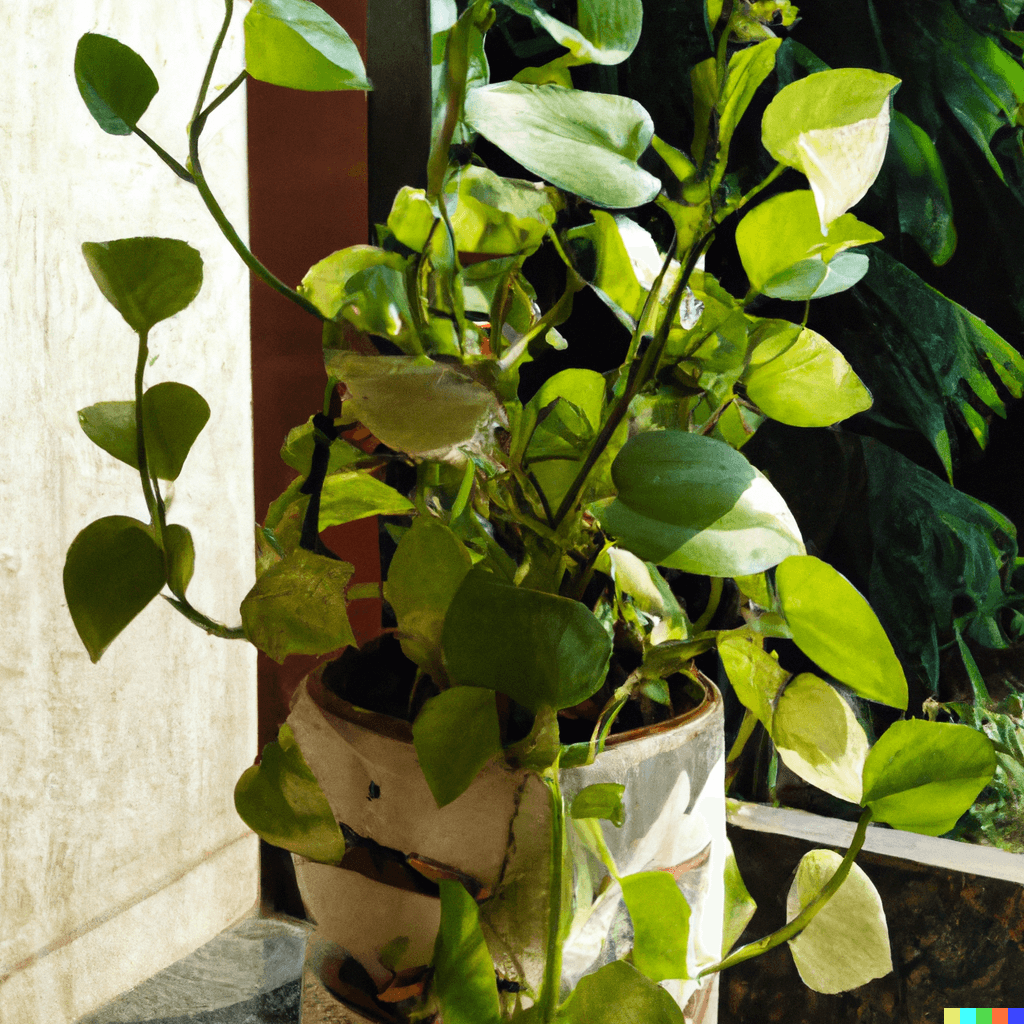Dipladenia: A Guide to Care and Maintenance

The conditions that favor the growth of Dipladenia are high temperatures and relative humidity. Bring any plants that are kept indoors during the winter that are kept in containers inside. If you live in a dry area or are growing plants inside, it is important to regularly mist the leaves of your plants in order to maintain a high humidity level. This will help your plants thrive.
Do Dipladenias require a specific amount of light?
Pick a spot that gets at least six hours of sunlight each day; in really hot areas, shade throughout the afternoon may be more desirable. Dipladenia needs to be watered on a consistent basis and fertilized in the spring with a single dose of a slow-release fertilizer such as 14-14-14.
Also See: Chinese Money Plant: How to Grow and Care
How long does Dipladenia typically live?
The first flowers of the Dipladenia plant often emerge in the early part of the summer, and the blooming season continues all the way up to the first frost of the fall. Despite its apparent resistance, this lovely vine cannot withstand frost in zones 8 and 9 of the USDA plant hardiness zone map.
What is the Growth rate of Dipladenia?
The growth rate of the plant known as Dipladenia is very slow. Mandevilla vines are capable of rapidly growing to heights of between 6 and 8 feet. It is possible, through careful annual pruning, to keep the form of your Dipladenia plants in good shape. If you intend to cultivate Dipladenia in a container, the soil in the container needs to have adequate drainage.
In what height range does Dipladenia often reside?
One growing season may be sufficient for vines of the genus Dipladenia to attain heights of 10–15 feet, depending on the variety. Due to the fact that they are vines, they can be shaped to develop in any desired direction. The introduction of mounding varieties of Dipladenia is a relatively recent development.
In what conditions does Dipladenia thrive?
The ideal conditions for growing Dipladenia are full sun and soil that is moist but has good drainage. The tropical plant known as Dipladenia cannot survive in temperatures below 60 degrees Fahrenheit. If you live in an area that experiences cold winters, it is recommended that you either treat Dipladenia as an exotic annual or bring it inside to a sunny window until spring.
How should Dipladenia be handled during the winter months?
Put the plant in a location where it will be exposed to sunlight for at least six hours every day and where the temperature will be higher than 45 degrees Fahrenheit. Only water the dipladenia if the top two inches of soil are showing signs of dryness. This will ensure that the plant stays healthy. The plant should still produce new leaves in the spring, even if some of the older ones fall off.
The amount of sunlight required to grow Dipladenia
If you want your Dipladenia to flourish, you will need to place it in an area that is exposed to sunshine for a minimum of six hours each day. Place your Dipladenia bush in sandy soil that has good drainage and has been supplemented with a substantial amount of organic material.
Common Issues with Dipladena
In general, these plants do not have a lot of problems with diseases or pests. On the other hand, they are vulnerable to the same diseases that can affect other types of plants.
Pests
It is well known that rock trumpets are particularly vulnerable to pests such as spider mites, aphids, and whiteflies. They have the ability to discolor the leaves of plants and even cause damage to the plants themselves. It is imperative to get rid of all of the posts if you want your plant to be in the best possible health. The application of insecticidal soap or neem oil can help get rid of the insects and speed up the healing process in the affected area.
Disease
The leaves of Dipladenia, also known as Mandevilla sanderii, are susceptible to a variety of diseases, some of which can cause them to turn yellow, brown, or develop spots. Your plants will succumb to these afflictions if you do not provide them with the proper care and maintenance. These diseases can be avoided by giving your plants the appropriate amount of water and sunlight, and by keeping the soil evenly moist.
Pruning
Once a year, a rock trumpet should have its branches pruned. It is best to prune the plant in the winter or early spring so that it can maintain its neat appearance and continue to produce healthy flowers. By performing timely pruning, one can achieve the best possible results.
Propagation
Cuttings of the plant can be used to propagate new plants. After you have cut it so that it is 4-6 inches below a leaf node, you should plant it in a container with some moist soil.
Potting/Repotting
When choosing a container for your Dipladenia, look for one that is only marginally bigger than the root ball. A container that is too large for a plant may cause the plant’s roots to expand uncontrollably, which will hinder the plant from attaining its full potential.







